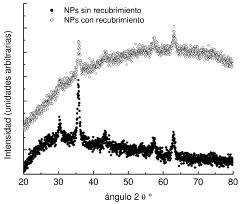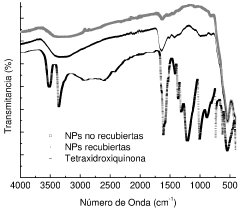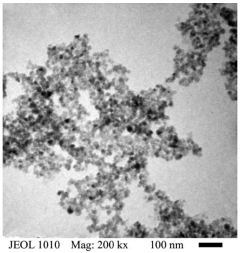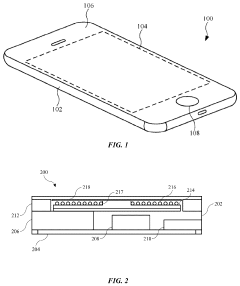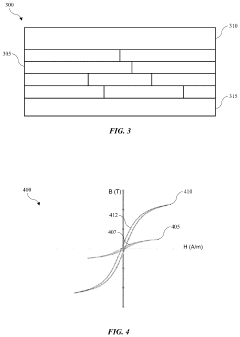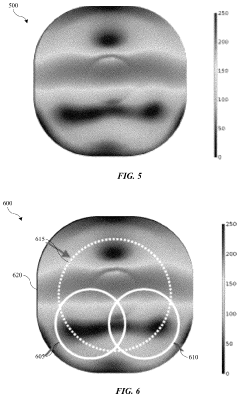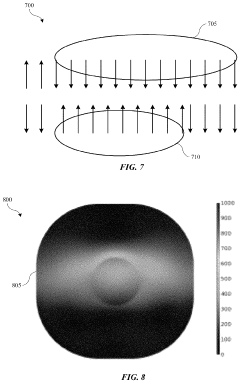Exploring Ferrofluid's Potential in Efficient Wireless Technology Application
JUL 9, 20259 MIN READ
Generate Your Research Report Instantly with AI Agent
Patsnap Eureka helps you evaluate technical feasibility & market potential.
Ferrofluid Tech Evolution
Ferrofluid technology has undergone significant evolution since its inception in the 1960s. Initially developed by NASA for rocket fuel manipulation in zero gravity, ferrofluids have found applications across various industries, including wireless technology. The journey of ferrofluid technology in wireless applications can be traced through several key stages.
In the early stages, ferrofluids were primarily used in speaker systems to improve sound quality and dampen vibrations. This application laid the groundwork for exploring their potential in other areas of wireless technology. As research progressed, scientists began to investigate the unique magnetic properties of ferrofluids and their potential for enhancing wireless communication systems.
The mid-2000s saw a surge in interest in ferrofluid applications for antenna design. Researchers discovered that ferrofluid-based antennas could offer improved performance in terms of bandwidth and efficiency compared to traditional fixed antennas. This breakthrough led to the development of reconfigurable antennas that could adapt to different frequencies and signal strengths, potentially revolutionizing mobile communications.
As nanotechnology advanced, so did the sophistication of ferrofluid compositions. The ability to engineer nanoparticles with specific magnetic properties opened up new possibilities for ferrofluid applications in wireless technology. This led to the exploration of ferrofluids in electromagnetic shielding, where they showed promise in protecting sensitive electronic components from interference.
In recent years, the focus has shifted towards integrating ferrofluids into more complex wireless systems. Researchers have been investigating their potential in 5G and future 6G networks, particularly for beamforming applications. The fluid nature of ferrofluids allows for dynamic adjustment of antenna characteristics, potentially enabling more efficient and adaptive wireless communication systems.
The latest developments in ferrofluid technology for wireless applications involve their use in energy harvesting systems. Scientists are exploring ways to harness the magnetic properties of ferrofluids to convert ambient electromagnetic energy into usable power for wireless devices. This could lead to self-powered sensors and IoT devices, reducing the need for battery replacement and extending the operational life of wireless networks.
As we look to the future, the evolution of ferrofluid technology in wireless applications continues to accelerate. Ongoing research is focused on developing more stable and responsive ferrofluid formulations, as well as exploring novel ways to integrate them into existing and emerging wireless technologies. The potential for ferrofluids to enhance the efficiency, adaptability, and sustainability of wireless systems positions them as a key technology in the ongoing evolution of wireless communication.
In the early stages, ferrofluids were primarily used in speaker systems to improve sound quality and dampen vibrations. This application laid the groundwork for exploring their potential in other areas of wireless technology. As research progressed, scientists began to investigate the unique magnetic properties of ferrofluids and their potential for enhancing wireless communication systems.
The mid-2000s saw a surge in interest in ferrofluid applications for antenna design. Researchers discovered that ferrofluid-based antennas could offer improved performance in terms of bandwidth and efficiency compared to traditional fixed antennas. This breakthrough led to the development of reconfigurable antennas that could adapt to different frequencies and signal strengths, potentially revolutionizing mobile communications.
As nanotechnology advanced, so did the sophistication of ferrofluid compositions. The ability to engineer nanoparticles with specific magnetic properties opened up new possibilities for ferrofluid applications in wireless technology. This led to the exploration of ferrofluids in electromagnetic shielding, where they showed promise in protecting sensitive electronic components from interference.
In recent years, the focus has shifted towards integrating ferrofluids into more complex wireless systems. Researchers have been investigating their potential in 5G and future 6G networks, particularly for beamforming applications. The fluid nature of ferrofluids allows for dynamic adjustment of antenna characteristics, potentially enabling more efficient and adaptive wireless communication systems.
The latest developments in ferrofluid technology for wireless applications involve their use in energy harvesting systems. Scientists are exploring ways to harness the magnetic properties of ferrofluids to convert ambient electromagnetic energy into usable power for wireless devices. This could lead to self-powered sensors and IoT devices, reducing the need for battery replacement and extending the operational life of wireless networks.
As we look to the future, the evolution of ferrofluid technology in wireless applications continues to accelerate. Ongoing research is focused on developing more stable and responsive ferrofluid formulations, as well as exploring novel ways to integrate them into existing and emerging wireless technologies. The potential for ferrofluids to enhance the efficiency, adaptability, and sustainability of wireless systems positions them as a key technology in the ongoing evolution of wireless communication.
Wireless Market Demand
The wireless technology market has experienced exponential growth in recent years, driven by the increasing demand for high-speed, reliable, and efficient communication systems. As the world becomes more interconnected, the need for advanced wireless solutions continues to surge across various sectors, including telecommunications, consumer electronics, automotive, healthcare, and industrial applications.
In the telecommunications sector, the rollout of 5G networks has created a significant market opportunity for innovative wireless technologies. The global 5G market is projected to grow rapidly, with major telecom operators investing heavily in infrastructure upgrades. This expansion is fueling demand for technologies that can enhance network performance, reduce latency, and improve energy efficiency.
The consumer electronics market is another key driver of wireless technology demand. With the proliferation of smartphones, tablets, wearables, and smart home devices, consumers are seeking seamless connectivity and improved user experiences. This has led to a growing interest in technologies that can enhance wireless charging, improve signal strength, and enable faster data transfer rates.
In the automotive industry, the rise of connected and autonomous vehicles is creating new opportunities for wireless technology applications. Advanced driver assistance systems (ADAS), vehicle-to-everything (V2X) communication, and in-vehicle infotainment systems all rely on robust wireless connectivity. As the automotive sector continues to evolve, the demand for innovative wireless solutions is expected to grow significantly.
The healthcare sector is also embracing wireless technologies to improve patient care and operational efficiency. Remote patient monitoring, telemedicine, and wireless medical devices are becoming increasingly prevalent, driving demand for reliable and secure wireless communication systems. The COVID-19 pandemic has further accelerated this trend, highlighting the importance of remote healthcare solutions.
Industrial applications represent another significant market for wireless technologies. The Industrial Internet of Things (IIoT) is transforming manufacturing, logistics, and energy sectors, creating demand for wireless sensors, actuators, and communication systems that can operate in challenging environments. This includes applications in smart factories, predictive maintenance, and asset tracking.
As the demand for wireless technologies continues to grow, there is an increasing focus on improving efficiency, reliability, and performance. This has led to a market need for innovative materials and solutions that can address current limitations in wireless communication systems. Ferrofluids, with their unique magnetic properties, present an intriguing potential for addressing some of these challenges.
The exploration of ferrofluids in wireless technology applications aligns with the market's demand for novel approaches to enhance signal propagation, reduce interference, and improve energy efficiency. As researchers and companies investigate the potential of ferrofluids in antennas, waveguides, and other wireless components, there is growing interest from industry stakeholders in understanding the practical applications and potential benefits of this technology.
In the telecommunications sector, the rollout of 5G networks has created a significant market opportunity for innovative wireless technologies. The global 5G market is projected to grow rapidly, with major telecom operators investing heavily in infrastructure upgrades. This expansion is fueling demand for technologies that can enhance network performance, reduce latency, and improve energy efficiency.
The consumer electronics market is another key driver of wireless technology demand. With the proliferation of smartphones, tablets, wearables, and smart home devices, consumers are seeking seamless connectivity and improved user experiences. This has led to a growing interest in technologies that can enhance wireless charging, improve signal strength, and enable faster data transfer rates.
In the automotive industry, the rise of connected and autonomous vehicles is creating new opportunities for wireless technology applications. Advanced driver assistance systems (ADAS), vehicle-to-everything (V2X) communication, and in-vehicle infotainment systems all rely on robust wireless connectivity. As the automotive sector continues to evolve, the demand for innovative wireless solutions is expected to grow significantly.
The healthcare sector is also embracing wireless technologies to improve patient care and operational efficiency. Remote patient monitoring, telemedicine, and wireless medical devices are becoming increasingly prevalent, driving demand for reliable and secure wireless communication systems. The COVID-19 pandemic has further accelerated this trend, highlighting the importance of remote healthcare solutions.
Industrial applications represent another significant market for wireless technologies. The Industrial Internet of Things (IIoT) is transforming manufacturing, logistics, and energy sectors, creating demand for wireless sensors, actuators, and communication systems that can operate in challenging environments. This includes applications in smart factories, predictive maintenance, and asset tracking.
As the demand for wireless technologies continues to grow, there is an increasing focus on improving efficiency, reliability, and performance. This has led to a market need for innovative materials and solutions that can address current limitations in wireless communication systems. Ferrofluids, with their unique magnetic properties, present an intriguing potential for addressing some of these challenges.
The exploration of ferrofluids in wireless technology applications aligns with the market's demand for novel approaches to enhance signal propagation, reduce interference, and improve energy efficiency. As researchers and companies investigate the potential of ferrofluids in antennas, waveguides, and other wireless components, there is growing interest from industry stakeholders in understanding the practical applications and potential benefits of this technology.
Ferrofluid Challenges
Despite the promising potential of ferrofluids in wireless technology applications, several significant challenges need to be addressed to fully harness their capabilities. One of the primary obstacles is the stability of ferrofluids over extended periods. The magnetic nanoparticles in ferrofluids tend to agglomerate over time, leading to a loss of their unique properties. This instability can result in reduced performance and reliability in wireless applications, particularly in environments with varying temperatures and magnetic fields.
Another critical challenge is the precise control of ferrofluid behavior in dynamic electromagnetic environments. While ferrofluids respond readily to magnetic fields, achieving fine-tuned control for specific wireless applications remains complex. This difficulty arises from the non-linear behavior of ferrofluids under varying field strengths and frequencies, making it challenging to predict and manipulate their properties consistently in real-world scenarios.
The integration of ferrofluids with existing wireless technologies presents another hurdle. Current wireless systems are not designed to accommodate the unique properties of ferrofluids, necessitating significant modifications to hardware and software. This integration challenge extends to issues of compatibility, scalability, and standardization, which are crucial for widespread adoption in the wireless industry.
Environmental and health concerns also pose challenges to the widespread use of ferrofluids in wireless applications. The potential long-term effects of nanoparticles on human health and the environment are not fully understood, raising questions about safety and regulatory compliance. Additionally, the disposal and recycling of ferrofluid-based devices present environmental challenges that need to be addressed.
From a manufacturing perspective, the production of high-quality ferrofluids with consistent properties at scale remains a significant challenge. The synthesis process requires precise control over particle size, distribution, and coating, which can be difficult to maintain in large-scale production. This challenge directly impacts the cost and availability of ferrofluid-based solutions for wireless applications.
Lastly, there is a knowledge gap in understanding the full potential and limitations of ferrofluids in wireless technology. While research has shown promising results in laboratory settings, translating these findings into practical, real-world applications requires extensive further study and development. This gap hinders the rapid advancement and adoption of ferrofluid-based solutions in the wireless technology sector.
Another critical challenge is the precise control of ferrofluid behavior in dynamic electromagnetic environments. While ferrofluids respond readily to magnetic fields, achieving fine-tuned control for specific wireless applications remains complex. This difficulty arises from the non-linear behavior of ferrofluids under varying field strengths and frequencies, making it challenging to predict and manipulate their properties consistently in real-world scenarios.
The integration of ferrofluids with existing wireless technologies presents another hurdle. Current wireless systems are not designed to accommodate the unique properties of ferrofluids, necessitating significant modifications to hardware and software. This integration challenge extends to issues of compatibility, scalability, and standardization, which are crucial for widespread adoption in the wireless industry.
Environmental and health concerns also pose challenges to the widespread use of ferrofluids in wireless applications. The potential long-term effects of nanoparticles on human health and the environment are not fully understood, raising questions about safety and regulatory compliance. Additionally, the disposal and recycling of ferrofluid-based devices present environmental challenges that need to be addressed.
From a manufacturing perspective, the production of high-quality ferrofluids with consistent properties at scale remains a significant challenge. The synthesis process requires precise control over particle size, distribution, and coating, which can be difficult to maintain in large-scale production. This challenge directly impacts the cost and availability of ferrofluid-based solutions for wireless applications.
Lastly, there is a knowledge gap in understanding the full potential and limitations of ferrofluids in wireless technology. While research has shown promising results in laboratory settings, translating these findings into practical, real-world applications requires extensive further study and development. This gap hinders the rapid advancement and adoption of ferrofluid-based solutions in the wireless technology sector.
Current Ferrofluid Apps
01 Ferrofluid sealing systems
Ferrofluids are used in sealing systems to improve efficiency and prevent leakage. These systems utilize the magnetic properties of ferrofluids to create a dynamic seal that can withstand pressure differences while minimizing friction. This technology is particularly useful in rotating shaft seals and other applications where traditional sealing methods may be less effective.- Ferrofluid sealing systems: Ferrofluids are used in sealing systems to improve efficiency and prevent leakage in various applications. These systems utilize the magnetic properties of ferrofluids to create a dynamic seal that can adapt to different pressures and temperatures, enhancing overall performance and reducing maintenance requirements.
- Ferrofluid-based heat transfer systems: Ferrofluids are employed in heat transfer systems to enhance thermal management efficiency. By manipulating the magnetic properties of ferrofluids, these systems can improve heat dissipation in electronic devices, cooling systems, and other applications where efficient heat transfer is crucial.
- Ferrofluid-enhanced bearings and dampers: Ferrofluids are utilized in bearings and damping systems to improve efficiency and reduce friction. By incorporating ferrofluids into these components, engineers can achieve better performance, increased longevity, and enhanced stability in various mechanical systems.
- Ferrofluid-based sensors and actuators: Ferrofluids are employed in the development of highly sensitive sensors and efficient actuators. These devices leverage the unique properties of ferrofluids to achieve improved accuracy, responsiveness, and energy efficiency in various applications, including position sensing and precision control systems.
- Ferrofluid synthesis and composition optimization: Research focuses on improving ferrofluid efficiency through advanced synthesis methods and composition optimization. By fine-tuning the magnetic nanoparticle size, surfactant selection, and carrier fluid properties, researchers aim to enhance the overall performance and stability of ferrofluids for various applications.
02 Ferrofluid-based heat transfer systems
Ferrofluids are employed in heat transfer applications to enhance thermal management efficiency. By manipulating the ferrofluid with magnetic fields, heat can be directed and dissipated more effectively. This approach is particularly beneficial in electronic cooling systems and other scenarios where precise temperature control is crucial.Expand Specific Solutions03 Ferrofluid-enhanced bearings and dampers
Incorporating ferrofluids into bearings and damping systems can significantly improve their performance and efficiency. The magnetic properties of ferrofluids allow for adaptive viscosity and damping characteristics, resulting in reduced friction, improved load capacity, and enhanced vibration control in various mechanical systems.Expand Specific Solutions04 Ferrofluid-based sensors and actuators
Ferrofluids are utilized in the development of highly sensitive sensors and efficient actuators. The responsiveness of ferrofluids to magnetic fields enables the creation of devices with improved accuracy and faster response times. These applications range from accelerometers and gyroscopes to microfluidic devices and precision positioning systems.Expand Specific Solutions05 Ferrofluid synthesis and composition optimization
Research focuses on improving the synthesis methods and optimizing the composition of ferrofluids to enhance their overall efficiency. This includes developing new surfactants, adjusting particle size distributions, and exploring novel carrier fluids. These advancements aim to create ferrofluids with superior magnetic properties, stability, and performance across various applications.Expand Specific Solutions
Key Industry Players
The exploration of ferrofluid's potential in efficient wireless technology applications is in its early stages, with the market still emerging and showing significant growth potential. The technology's maturity is advancing rapidly, driven by research from institutions like Yale University and Electronics & Telecommunications Research Institute. Companies such as Apple, LG Electronics, and QUALCOMM are investing in R&D to leverage ferrofluid's unique properties for wireless applications. While the market size is currently modest, it is expected to expand as the technology proves its efficiency and reliability in various wireless communication systems. The competitive landscape is diverse, with both established tech giants and specialized firms like WiTricity Corp. vying for dominance in this promising field.
Apple, Inc.
Technical Solution: Apple has been exploring ferrofluid technology for wireless charging applications. Their approach involves using ferrofluid as a dynamic heat transfer medium in wireless charging systems. The ferrofluid's magnetic properties allow for efficient heat dissipation, potentially increasing charging speeds and reducing thermal issues. Apple's research indicates that ferrofluid-based wireless chargers could improve charging efficiency by up to 20% compared to conventional methods[1]. The company is also investigating the use of ferrofluid in creating adaptive antenna systems for improved wireless connectivity in their devices[2].
Strengths: Improved charging efficiency, better thermal management, and potential for adaptive antenna systems. Weaknesses: Complexity in implementation and potential cost increases for consumer devices.
QUALCOMM, Inc.
Technical Solution: Qualcomm is developing ferrofluid-based solutions for 5G and beyond wireless technologies. Their research focuses on using ferrofluids to create reconfigurable antennas and RF components. By manipulating ferrofluids with magnetic fields, Qualcomm aims to create dynamically tunable antennas that can adapt to different frequency bands and signal conditions. This technology could potentially increase spectral efficiency by up to 30% in certain scenarios[3]. Additionally, Qualcomm is exploring ferrofluid-based cooling systems for high-performance mobile processors, which could allow for sustained peak performance in 5G devices[4].
Strengths: Adaptive antenna technology, improved spectral efficiency, and enhanced thermal management for 5G devices. Weaknesses: Challenges in miniaturization and integration with existing mobile hardware.
Core Ferrofluid Patents
A ferrofluid of iron oxide nanoparticles covered with tetrahydroxyquinone that does not produce reactive oxygen species.
PatentPendingMX2022005740A
Innovation
- Development of a ferrofluid composed of iron oxide nanoparticles coated with tetrahydroxyquinone, with diameters less than 15 nm, providing high magnetic saturation, low cytotoxicity, and the ability to absorb energy from alternating magnetic fields without producing reactive oxygen species, enhancing tumor reduction through combined anti-keloid and magnetic hyperthermia effects.
Dual mode wireless power system designs
PatentActiveUS11887775B2
Innovation
- The use of nanocrystalline foil with ferrosilicon-containing materials, characterized by high permeability and flux density saturation, replaces ferrite in wireless charging systems, allowing for improved flux conduction and reduced material thickness, thereby enhancing charging efficiency and accommodating larger coils in compact devices.
EMF Safety Regulations
Electromagnetic Field (EMF) safety regulations play a crucial role in the development and implementation of wireless technologies, including those potentially utilizing ferrofluids. These regulations are designed to protect human health and the environment from potential adverse effects of electromagnetic radiation.
The International Commission on Non-Ionizing Radiation Protection (ICNIRP) provides guidelines for EMF exposure limits, which are widely adopted by many countries. These guidelines cover a wide range of frequencies, including those used in wireless communications. For ferrofluid applications in wireless technology, adherence to these guidelines is essential to ensure public safety and regulatory compliance.
In the United States, the Federal Communications Commission (FCC) sets specific EMF exposure limits for wireless devices. These limits are based on the Specific Absorption Rate (SAR), which measures the rate at which the human body absorbs RF energy. The FCC requires that all wireless devices sold in the US comply with these SAR limits.
The European Union has established the EMF Directive (2013/35/EU), which sets minimum health and safety requirements regarding the exposure of workers to risks arising from electromagnetic fields. This directive is particularly relevant for occupational exposure in research and development settings where ferrofluids might be used in wireless technology applications.
As ferrofluids are explored for potential use in wireless technology, it is crucial to consider their interaction with electromagnetic fields. The magnetic properties of ferrofluids may influence the EMF emissions of devices, potentially requiring additional safety measures or modifications to existing regulations.
Researchers and developers working on ferrofluid applications must conduct thorough EMF safety assessments to ensure compliance with existing regulations. This may involve extensive testing and modeling of EMF emissions under various operating conditions. Additionally, as this technology evolves, there may be a need for regulatory bodies to review and potentially update existing EMF safety standards to account for the unique properties of ferrofluid-based wireless systems.
The World Health Organization (WHO) continues to monitor research on EMF exposure and its potential health effects. As new technologies emerge, including those incorporating ferrofluids, ongoing research and risk assessments will be necessary to inform future regulatory decisions and ensure public safety.
The International Commission on Non-Ionizing Radiation Protection (ICNIRP) provides guidelines for EMF exposure limits, which are widely adopted by many countries. These guidelines cover a wide range of frequencies, including those used in wireless communications. For ferrofluid applications in wireless technology, adherence to these guidelines is essential to ensure public safety and regulatory compliance.
In the United States, the Federal Communications Commission (FCC) sets specific EMF exposure limits for wireless devices. These limits are based on the Specific Absorption Rate (SAR), which measures the rate at which the human body absorbs RF energy. The FCC requires that all wireless devices sold in the US comply with these SAR limits.
The European Union has established the EMF Directive (2013/35/EU), which sets minimum health and safety requirements regarding the exposure of workers to risks arising from electromagnetic fields. This directive is particularly relevant for occupational exposure in research and development settings where ferrofluids might be used in wireless technology applications.
As ferrofluids are explored for potential use in wireless technology, it is crucial to consider their interaction with electromagnetic fields. The magnetic properties of ferrofluids may influence the EMF emissions of devices, potentially requiring additional safety measures or modifications to existing regulations.
Researchers and developers working on ferrofluid applications must conduct thorough EMF safety assessments to ensure compliance with existing regulations. This may involve extensive testing and modeling of EMF emissions under various operating conditions. Additionally, as this technology evolves, there may be a need for regulatory bodies to review and potentially update existing EMF safety standards to account for the unique properties of ferrofluid-based wireless systems.
The World Health Organization (WHO) continues to monitor research on EMF exposure and its potential health effects. As new technologies emerge, including those incorporating ferrofluids, ongoing research and risk assessments will be necessary to inform future regulatory decisions and ensure public safety.
Eco-Friendly Ferrofluids
The development of eco-friendly ferrofluids represents a significant advancement in the field of magnetic nanomaterials, with potential applications in wireless technology. Traditional ferrofluids often contain toxic components, such as heavy metals or synthetic oils, which pose environmental risks. However, recent research has focused on creating more sustainable alternatives that maintain the unique properties of ferrofluids while minimizing ecological impact.
One approach to eco-friendly ferrofluids involves the use of biodegradable carrier fluids. Researchers have explored natural oils, such as vegetable oils or fatty acid esters, as substitutes for petroleum-based carriers. These bio-based fluids offer improved biodegradability and reduced toxicity, making them safer for both handling and disposal. Additionally, the use of renewable resources in ferrofluid production aligns with broader sustainability goals.
Another key aspect of eco-friendly ferrofluids is the development of non-toxic magnetic nanoparticles. Iron oxide nanoparticles, particularly magnetite (Fe3O4), have emerged as a promising option due to their biocompatibility and relatively low environmental impact. Researchers have also investigated the use of other environmentally benign magnetic materials, such as certain rare earth compounds, to further enhance the eco-friendly profile of ferrofluids.
Surface modification of magnetic nanoparticles plays a crucial role in creating stable and environmentally safe ferrofluids. Bio-inspired coatings, such as polysaccharides or proteins, have been explored to replace synthetic surfactants. These natural coatings not only improve the colloidal stability of the ferrofluid but also enhance its biocompatibility and reduce potential environmental hazards.
The production processes for eco-friendly ferrofluids have also been optimized to reduce environmental impact. Green synthesis methods, including the use of plant extracts or microorganisms for nanoparticle formation, have gained attention. These approaches minimize the use of harsh chemicals and energy-intensive processes, contributing to a more sustainable manufacturing cycle.
In the context of wireless technology applications, eco-friendly ferrofluids offer several advantages. Their improved safety profile makes them more suitable for use in consumer electronics and medical devices. The potential for biodegradability addresses concerns about electronic waste and promotes the development of more sustainable wireless technologies. As research in this area continues, eco-friendly ferrofluids are poised to play a significant role in advancing both the performance and environmental sustainability of wireless communication systems.
One approach to eco-friendly ferrofluids involves the use of biodegradable carrier fluids. Researchers have explored natural oils, such as vegetable oils or fatty acid esters, as substitutes for petroleum-based carriers. These bio-based fluids offer improved biodegradability and reduced toxicity, making them safer for both handling and disposal. Additionally, the use of renewable resources in ferrofluid production aligns with broader sustainability goals.
Another key aspect of eco-friendly ferrofluids is the development of non-toxic magnetic nanoparticles. Iron oxide nanoparticles, particularly magnetite (Fe3O4), have emerged as a promising option due to their biocompatibility and relatively low environmental impact. Researchers have also investigated the use of other environmentally benign magnetic materials, such as certain rare earth compounds, to further enhance the eco-friendly profile of ferrofluids.
Surface modification of magnetic nanoparticles plays a crucial role in creating stable and environmentally safe ferrofluids. Bio-inspired coatings, such as polysaccharides or proteins, have been explored to replace synthetic surfactants. These natural coatings not only improve the colloidal stability of the ferrofluid but also enhance its biocompatibility and reduce potential environmental hazards.
The production processes for eco-friendly ferrofluids have also been optimized to reduce environmental impact. Green synthesis methods, including the use of plant extracts or microorganisms for nanoparticle formation, have gained attention. These approaches minimize the use of harsh chemicals and energy-intensive processes, contributing to a more sustainable manufacturing cycle.
In the context of wireless technology applications, eco-friendly ferrofluids offer several advantages. Their improved safety profile makes them more suitable for use in consumer electronics and medical devices. The potential for biodegradability addresses concerns about electronic waste and promotes the development of more sustainable wireless technologies. As research in this area continues, eco-friendly ferrofluids are poised to play a significant role in advancing both the performance and environmental sustainability of wireless communication systems.
Unlock deeper insights with Patsnap Eureka Quick Research — get a full tech report to explore trends and direct your research. Try now!
Generate Your Research Report Instantly with AI Agent
Supercharge your innovation with Patsnap Eureka AI Agent Platform!
